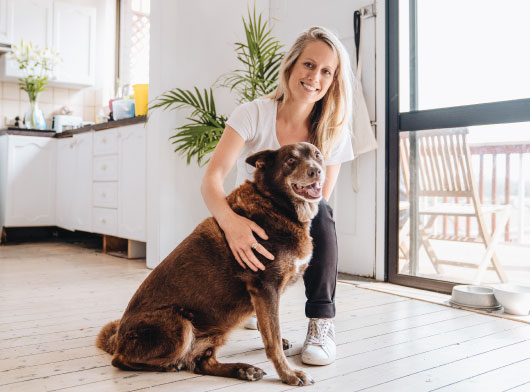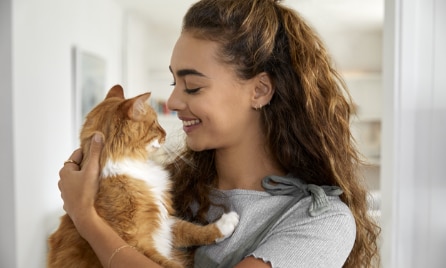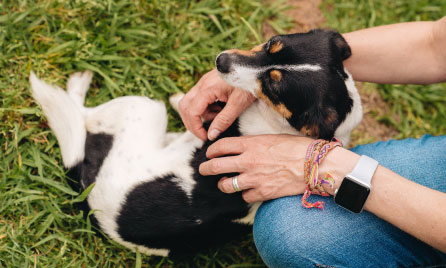- text
-
† Offer available to new Everyday Pet Insurance policyholders, and is limited to 1 membership per eligible policy. The free membership offer (valued at $199p.a) is from the date of your policy commencement, provided your Everyday Pet Insurance policy remains active. You are not eligible to redeem the free membership subscription for cash or credit. VetAssist is a separate subscription based service to the Everyday Pet Insurance product, and is provided independently by Everyday Insurance third party service provider, VetChat Services Pty Ltd (VetChat). Click here for full VetAssist Service terms and conditions. Everyday Insurance reserves the right to vary or remove this offer at any time and will provide reasonable notice of any such changes.
How to avoid grass seed abscesses in your pet this spring.
The grass is growing again this Spring, which means we’re in the season of bindis and grass seeds.
This time of year we’re commonly treating grass seed abscesses in our pets. If you look closely at a grass seed head, you’ll see that they are shaped like an arrow with a very sharp point and feathered sides. Once the head lodges into your pet's skin, pain and infection can result, and it can even migrate further around the body under the skin.
Many dogs and cats love to roll and play in the grass, so the common spots we find grass seeds in our pets are the paws, in the eyes, and in the ear, but they can lodge anywhere there is skin.
Symptoms depend on where the grass seed has lodged and can include your pet shaking their head, rubbing their eyes or face, sore eye, ear infection, licking and biting at their paws or affected area, and limping.
Your grass seed abscess avoidance plan.
Mow your lawn regularly.
Walk on short grass and paths, avoiding walks in the long grass.
Regularly have long haired dogs groomed to keep fur short especially around the face, paws and ears.
Brush cats coat daily.
Check your little love daily. Straight after a walk spend five minutes checking your pup thoroughly from nose to tail, and remove any grass seeds you see – this gets rid of them before they can burrow into the skin. Be systematic and check the legs, arm pits, body, around the tail, face, ears and paws especially between each of the toes.
In the unhappy situation your pet has a grass seed causing infection, it needs to be removed and treated immediately. Grass seeds and resulting abscesses cause pain and discomfort, and also cause great damage to the affected area.
Head to your local Vet for a hands on examination- it’s much easier (and cheaper!) to treat these early rather than further down the track. Sometimes, anaesthetic and surgery are needed to find and safely remove a grass seed.
Related articles.
Please note: Not all conditions, vet visits and treatments are covered by Everyday Pet Insurance. Refer to the Product Disclosure Statement for details of coverage.
- text
-
Everyday Pet Insurance policies entered into for the first time prior to 17 July 2023 and subsequent renewals of those policies are issued by The Hollard Insurance Company Pty Ltd ABN 78 090 584 473, AFSL 241436 (Hollard), arranged and administered by PetSure (Australia) Pty Ltd ABN 95 075 949 923, AFSL 420183 (PetSure) and promoted and distributed by Hollard’s Authorised Representative (AR) Woolworths Group Limited ABN 88 000 014 675, AR 245476 (Woolworths). Everyday Pet Insurance policies entered into for the first time on or after 17 July 2023 and subsequent renewals of those policies are issued by PetSure and promoted and distributed by PetSure’s AR, Woolworths. Any advice provided is general only and does not take into account your individual objectives, financial situation or needs. Please consider the Product Disclosure Statement (PDS) to ensure this product meets your needs before purchasing, or choosing to continue with the product. PDS and Target Market Determination available at insurance.everyday.com.au/pet-insurance.





